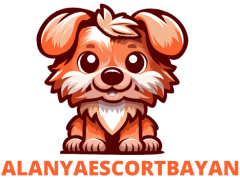In today’s rapidly evolving educational landscape, Learning Management System (LMS) software has become an essential tool for educators, trainers, and learners alike. Whether you’re a teacher looking to deliver engaging online courses, a corporate trainer seeking to upskill employees, or a student eager to access educational content from anywhere, mastering Learning Management System software is key to achieving your goals. In this comprehensive guide, we’ll explore What what is an lms ? software is, its key features, benefits, and how you can make the most of this powerful tool.
Understanding Learning Management System Software
Learning Management System (LMS) software is a comprehensive platform designed to streamline and enhance the learning experience. It serves as a centralized hub for delivering, managing, and tracking educational content and training programs. LMS software provides a wide range of features, including course management, assessment tools, communication channels, and analytics, empowering educators and learners to engage in more effective and efficient learning experiences.
Key Features of Learning Management System Software
To master Learning Management System software, it’s essential to understand its key features and functionalities:
Course Management: LMS software allows instructors to create, organize, and deliver course content seamlessly. From multimedia resources to assignments and quizzes, everything can be managed within the system.
User Management: Administrators can manage user accounts, roles, and permissions, ensuring that the right people have access to the right content.
Assessment and Evaluation: LMS platforms offer robust assessment tools, including quizzes, exams, and assignments, with immediate feedback to learners.
Communication and Collaboration: LMS software facilitates communication and collaboration between learners and instructors through discussion forums, messaging systems, and virtual classrooms.
Reporting and Analytics: Detailed reporting and analytics capabilities allow instructors and administrators to track learner progress, measure engagement, and generate customized reports.
Benefits of Mastering Learning Management System Software

Mastering Learning Management System software offers a wide range of benefits for both educators and learners:
Flexibility and Accessibility: LMS platforms offer anytime, anywhere access to educational content, allowing learners to study at their own pace, on their preferred devices, and from any location with an internet connection.
Cost-effectiveness: LMS software reduces the need for traditional classroom-based training, saving time and resources associated with travel, accommodation, and venue hire.
Personalization: LMS platforms allow instructors to tailor learning experiences to the individual needs and preferences of learners, providing personalized learning paths, adaptive content, and targeted feedback.
Data-driven Insights: LMS platforms provide valuable data and insights into learner behavior, performance, and engagement, allowing instructors to identify trends, measure learning outcomes, and continuously improve their courses.
Tips for Mastering Learning Management System Software
To make the most of Learning Management System software, consider the following tips:
- Explore the Platform: Take the time to explore all the features and functionalities of your LMS software. Familiarize yourself with the course management tools, assessment options, communication channels, and reporting capabilities.
- Customize Your Courses: Tailor your courses to meet the needs and preferences of your learners. Use multimedia resources, interactive activities, and collaborative projects to engage your students and enhance their learning experience.
- Provide Timely Feedback: Use the assessment tools in your LMS software to provide timely and constructive feedback to your learners. This will help them track their progress, identify areas for improvement, and stay motivated throughout the course.
- Engage Your Learners: Encourage active participation and collaboration among your learners. Use discussion forums, messaging systems, and virtual classrooms to facilitate communication and collaboration, fostering a dynamic learning environment.
- Monitor Learner Progress: Regularly monitor learner progress and engagement using the reporting and analytics tools in your LMS software. This will allow you to identify trends, measure learning outcomes, and make data-driven decisions to improve your courses.
Popular Learning Management System Software
Several Learning Management System (LMS) software solutions are widely used across various industries:
Moodle: An open-source LMS platform widely used in educational institutions and corporate settings.
Canvas: A cloud-based LMS developed by Instructure, known for its user-friendly interface and robust features.
Blackboard Learn: A comprehensive LMS platform widely used in higher education and corporate training.
Google Classroom: A free LMS developed by Google, integrated with Google Workspace, making it ideal for K-12 schools and educators.
Schoology: An LMS designed for K-12 schools and districts, offering a user-friendly interface and collaborative tools.
Leveraging Advanced Features

To truly master Learning Management System software, it’s essential to leverage its advanced features and functionalities. Explore features such as gamification, microlearning, and virtual classrooms to create engaging and interactive learning experiences for your students. Gamification elements such as badges, points, and leaderboards can motivate learners and increase their engagement with course materials. Microlearning, which involves delivering content in small, bite-sized chunks, can help improve knowledge retention and comprehension. Virtual classrooms allow for real-time interaction and collaboration, simulating the traditional classroom experience in an online environment. By taking advantage of these advanced features, you can create dynamic and effective learning experiences that meet the diverse needs of your students.
Continuous Improvement and Professional Development
Finally, mastering Learning Management System software is an ongoing process that requires continuous learning and professional development. Stay up-to-date with the latest trends and developments in online education and training, and regularly explore new features and functionalities offered by your LMS software. Participate in training sessions, webinars, and online courses to expand your knowledge and skills. Collaborate with colleagues and peers to share best practices and learn from each other’s experiences. By investing in your professional development and staying informed about the latest advancements in Learning Management System software, you can continue to improve your teaching and training practices and provide the best possible learning experiences for your students.
Conclusion
Mastering Learning Management System software is essential for educators, trainers, and learners looking to take their education and training to the next level. By understanding the key features, benefits, and best practices associated with LMS software, you can create engaging and effective learning experiences that empower learners to achieve their goals. Whether you’re a teacher, a corporate trainer, or a student, Learning Management System software is the key to unlocking your full potential and achieving your learning and training objectives in the digital age.

